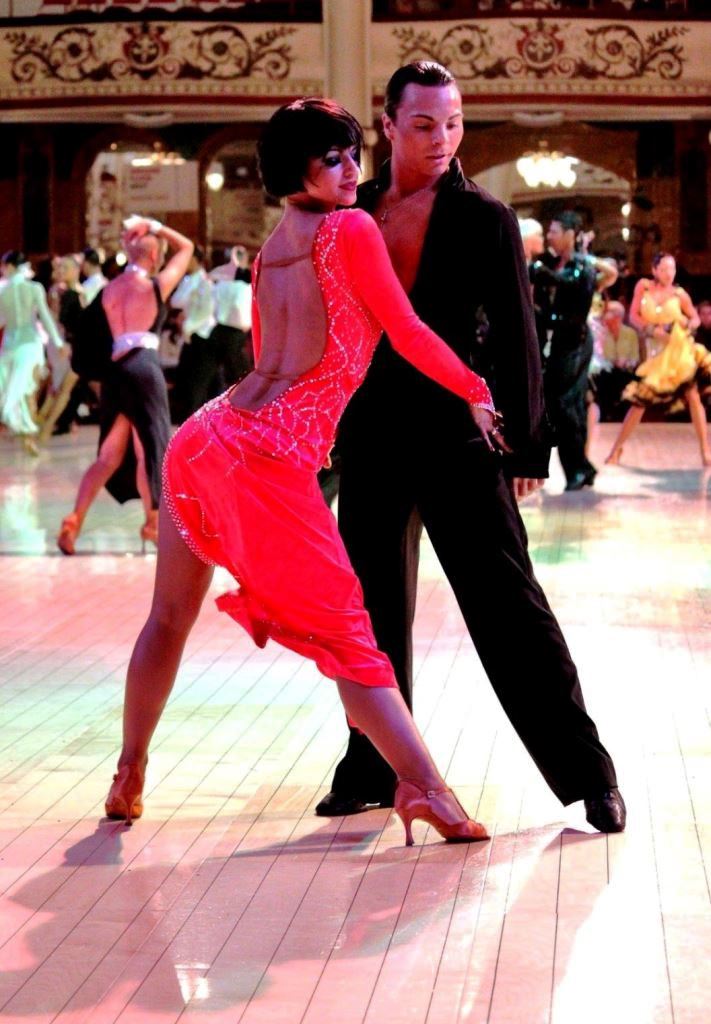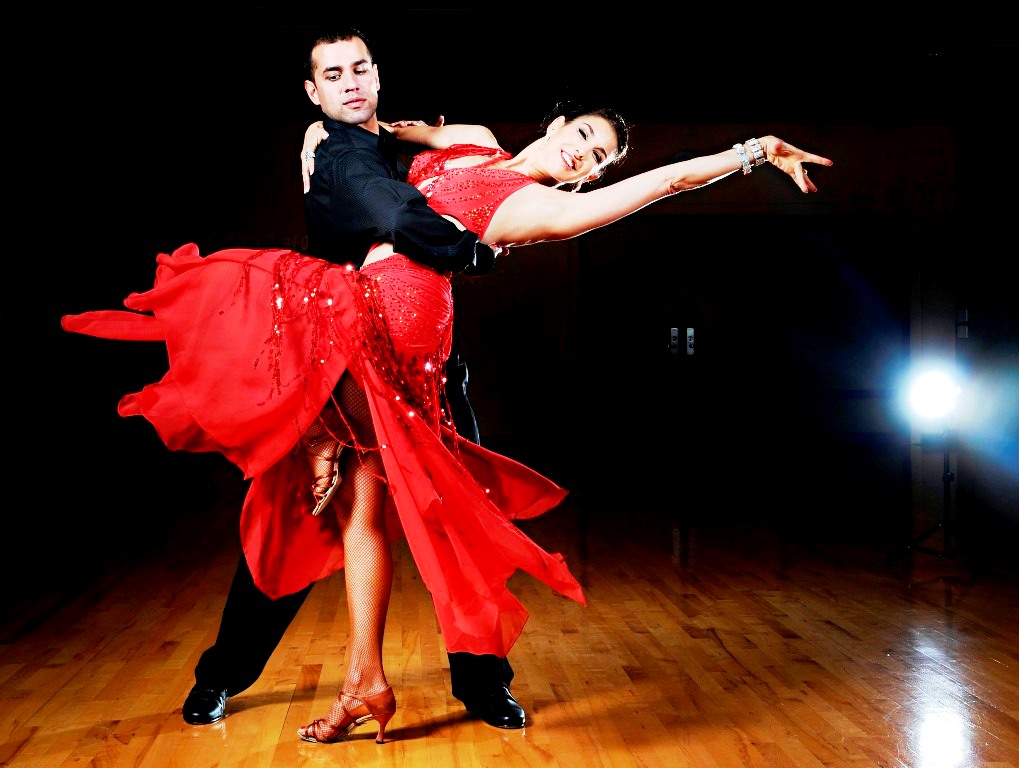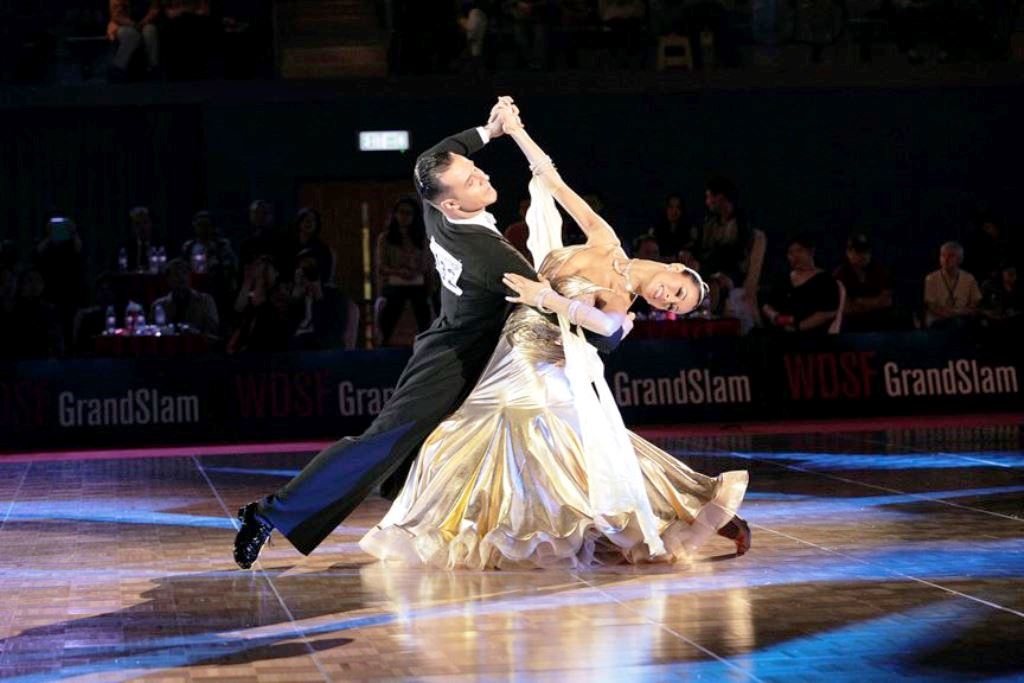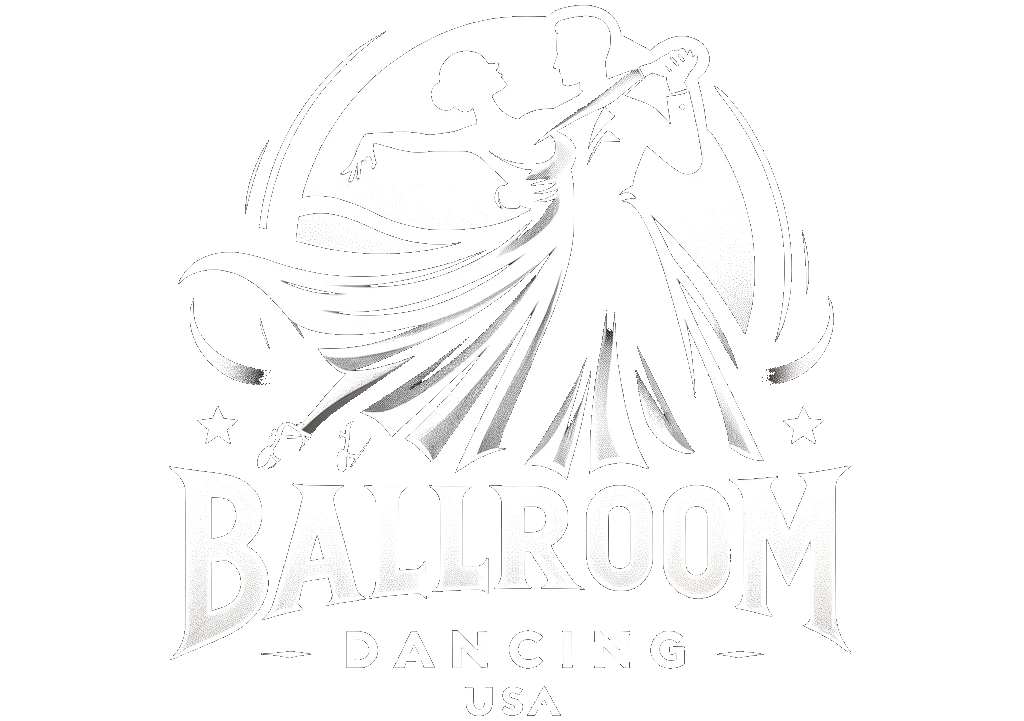
1. Introduction to Ballroom Dance in the USA
Introduction to Ballroom Dance in the USA
Ballroom dance has been a part of American culture for centuries, with its roots reaching back to the 18th century. From its earliest days, ballroom dance has been a way for people of all backgrounds and ages to come together and express themselves through movement and music. Today, ballroom dance is a popular activity in the United States, with people of all ages and backgrounds taking part in classes, competitions, and social dances.
Ballroom dance in the United States is largely divided into two main styles: International Standard and American Smooth. International Standard is a combination of five dances: the Waltz, the Tango, the Foxtrot, the Quickstep, and the Viennese Waltz. American Smooth is a fusion of five dances: the Waltz, the Tango, the Foxtrot, the Bolero, and the Mambo. Both styles of dance offer a wide variety of steps and movements that allow for creativity and expression.
The American ballroom dance scene is vibrant and ever-evolving, with new trends and styles emerging every year. It is a highly competitive sport, with competitions held at the local, state, regional, and national levels. It is also a popular social activity, with people of all ages and backgrounds coming together to enjoy the music and dance.
At the heart of the American ballroom dance scene are the trailblazers and icons who have been influential in the development of the sport. These individuals have made significant contributions to the art form, and their achievements have had a lasting impact on the world of ballroom dance in the United States.
Trailblazers and Icons
The trailblazers and icons of ballroom dance in the United States have been instrumental in the development of the sport. These individuals have pushed the boundaries of the art form, introducing new styles and techniques that have revolutionized the way ballroom dance is practiced.
The most influential figures in the world of ballroom dance in the United States include Arthur Murray, Fred Astaire, Marge Champion, and Ginger Rogers. Arthur Murray was a pioneer in the development of the American style of ballroom dance, introducing the concept of teaching ballroom dance in a group setting. Fred Astaire and Ginger Rogers were iconic Hollywood stars who popularized ballroom dance in the United States. Marge Champion was a legendary dancer and choreographer who was instrumental in the development of the American Smooth style of ballroom dance.
These trailblazers and icons have had a lasting impact on the world of ballroom dance in the United States, and their legacy continues to shape the art form today.
2. Overview of Trailblazers and Icons in the Ballroom Dance World
Trailblazers and Icons Influential Figures in the World of Ballroom Dance
Overview of Trailblazers and Icons in the Ballroom Dance World
The world of ballroom dance has been forever changed by the trailblazers and icons who have left their mark on the history of the art form. From the early days of the ballroom dance craze of the 1920s to the modern day, these influential figures have shaped the way we dance and the way we think about ballroom dance.
In the 1920s, the most influential figure was Vernon and Irene Castle, who popularized the Foxtrot and other dances. They were the first to bring ballroom dancing into the mainstream, and their influence is still felt today.
In the 1930s, Fred Astaire and Ginger Rogers were a major influence on ballroom dancing. Their films popularized the Waltz, Foxtrot, and Swing, and their skill and grace made them icons of the art form.
In the 1940s, Arthur Murray and his wife Kathryn Murray introduced the world to the Cha Cha and Mambo. They popularized Latin ballroom dancing and made it more accessible to the public.
In the 1950s, the Strictly Come Dancing series was the first to bring ballroom dancing to the world stage. The show featured the most influential ballroom dancers of the time, such as John Travolta and Shirley MacLaine.
In the 1960s, the rise of the disco era brought a new wave of ballroom dancers to the forefront. John Travolta, Patrick Swayze, and Donna Summer were all major influences on the development of the Hustle.
In the 1970s, the development of competitive ballroom dancing was pioneered by the likes of Pierre Dulaine and Donnie Burns. Their work has been instrumental in the growth of the sport and in the development of the professional ballroom dancing circuit.
In the 1980s, the ballroom dance world was revolutionized by the emergence of the Latin Ballroom style. This style was popularized by the likes of Maksim Chmerkovskiy and Julianne Hough, who have become icons of the ballroom dance world.
In the 1990s, the world of ballroom dancing was further revolutionized by the emergence of the New Vogue style. This style was popularized by the likes of Derek Hough and Cheryl Burke, who have become influential figures in the ballroom dance world.
In the 2000s, the development of the International Latin and Standard styles was pioneered by the likes of Pasha Kovalev and Joanna Leunis. These two dancers are now considered to be one of the most influential figures in the world of ballroom dance.
In the modern day, the world of ballroom dancing is still being shaped by the influence of these iconic figures. Their work has made ballroom dancing an art form that is accessible to everyone, and their legacy will continue to inspire future generations of dancers.
3. The Impact of Fred Astaire and Ginger Rogers
The Impact of Fred Astaire and Ginger Rogers
Fred Astaire and Ginger Rogers are two of the most iconic figures in the history of ballroom dance. The pair starred in a series of Hollywood musicals from the 1930s to the 1950s, and their performances captured the imagination of audiences around the world.
Astaire and Rogers brought a new level of sophistication and grace to the world of ballroom dancing. Their performances incorporated intricate choreography that showcased their skill and artistry, and they brought a sense of elegance and glamour to the genre.
Their influence was felt both on and off the screen. The Astaire-Rogers films popularized ballroom dancing in the United States and around the world, and their style of dance became the standard for the genre.
The Legacy of Fred Astaire and Ginger Rogers
The legacy of Fred Astaire and Ginger Rogers lives on to this day. Their performances continue to inspire ballroom dancers around the world, and their influence can be seen in everything from competitive ballroom dancing to the popular TV show “Dancing with the Stars”.
Their films are also still popular, and they have become classics of the musical genre. Their performances continue to captivate audiences, and they have become a timeless symbol of grace, elegance, and artistry in the world of ballroom dance.
4. The Influence of Arthur Murray
The Influence of Arthur Murray
Arthur Murray (1895-1991) was an American dance instructor and entrepreneur who opened the first Arthur Murray Dance Studio in 1912. He is credited with popularizing ballroom dancing in the United States, and his dance studios grew to become a world-wide chain.
Early Life and Career
Murray was born in 1895 in Galveston, Texas. He started as a dance instructor in 1912 in New York, and developed a series of instructional dance courses that he sold to the public. He also developed the Arthur Murray Dance Party, which featured live music and dancing in a social setting.
Popularizing Ballroom Dancing
Murray was instrumental in popularizing ballroom dancing in the United States. He was one of the first to hold dance competitions, and he also produced instructional dance films. He also wrote several books on ballroom dancing. His dance studios in the United States and around the world taught millions of people how to dance.
Legacy
Murray’s influence on the world of ballroom dancing was immense. He is credited with popularizing the art form in the United States, and his dance studios and instructional materials have been used by millions of people around the world. His legacy lives on in the Arthur Murray Dance Centers, which continue to teach ballroom dance to people of all ages.
5. The Legacy of Shirley Temple
The Legacy of Shirley Temple
Shirley Temple is one of the most iconic figures in the history of ballroom dance. As a child star in the 1930s, she was one of the first to popularize ballroom dancing in the US. She was a pioneer of the Lindy Hop, a style of swing dance that originated in the 1920s. She also popularized the Foxtrot and Waltz.
Shirley Temple’s influence on ballroom dancing was immense. She helped to make it more accessible to the general public, and her films helped to popularize the genre. Her films also helped to popularize the idea of using music to accompany the dancing.
Shirley Temple’s influence on ballroom dancing has been felt for decades. She was an inspiration to many, and her style of dancing has been emulated by dancers around the world. Her legacy continues to inspire dancers of all ages, and her influence on the world of ballroom dance is undeniable.
The Shirley Temple Dance
The Shirley Temple dance is a dance that was created in her honor. It is a fun and lively dance that incorporates elements of the Foxtrot, Waltz, and Lindy Hop. The dance is performed with a partner and is a great way to get your feet moving and your heart racing.
The Shirley Temple Dance is popular among both children and adults. It is a great way to get a group of people together and have a good time. The dance is a great way to introduce ballroom dancing to those who may not be familiar with it.
Conclusion
Shirley Temple was a trailblazer and an icon in the world of ballroom dance. Her influence on the genre has been felt for decades and her legacy continues to inspire dancers of all ages. The Shirley Temple Dance is a great way to honor her legacy and introduce ballroom dancing to those who may not be familiar with it.
6. The Contributions of Marge and Gower Champion
The Contributions of Marge and Gower Champion
Marge and Gower Champion were a husband-and-wife team of ballroom dancers and choreographers who made a lasting impression on the world of ballroom dancing in the USA.
Early Career and Influences
Marge and Gower began their dance career in the 1940s, when they were both members of the American Ballet Theatre. They soon moved on to choreographing for Broadway musicals, such as “Gentlemen Prefer Blondes” and “Showboat”. In addition, they were both heavily influenced by the work of Fred Astaire and Ginger Rogers.
Breakthrough on Television
The Champions’ career really took off in the 1950s when they began to choreograph for television. They were responsible for the choreography of the popular variety show, “The Milton Berle Show”. They also choreographed for “The Perry Como Show” and “The Dinah Shore Show”.
Film Work
Marge and Gower also had a successful career in film. They choreographed for the classic musicals “Showboat” and “Seven Brides for Seven Brothers”. They also choreographed for the hit film “The Band Wagon”.
Legacy
Marge and Gower Champion left an indelible mark on the world of ballroom dance. Their choreography was innovative and influential, and their influence can be seen in the work of modern-day ballroom dancers. They are remembered as two of the most influential figures in the world of ballroom dance.
7. The Pioneering of Fred and Adele Astaire
The Pioneering of Fred and Adele Astaire
Fred and Adele Astaire were a brother-sister duo who revolutionized the world of ballroom dance in the early 20th century. They were the first to popularize the sophisticated, graceful style of ballroom dancing and made it accessible to the masses.
Early Years
Fred and Adele Astaire were born in Omaha, Nebraska in 1896 and 1893 respectively. They began their dancing career as vaudeville performers at the age of five and six, and were soon performing in musicals in New York.
Rise to Fame
The Astaires’ rise to fame began in 1919, when they performed in their first Broadway show, Over the Top. They went on to perform in numerous Broadway shows and films, and their fame spread across the nation. They were known for their elegant style of ballroom dancing, which was a departure from the more traditional styles of the time.
Influence on Ballroom Dance
The Astaires’ influence on ballroom dance was immense. They popularized the concept of partnered ballroom dancing, which was previously seen as a formal, rigid activity. They also introduced new steps and choreography that allowed for more improvisation and creativity.
Legacy
The Astaires’ legacy lives on today. Their style of ballroom dancing continues to be taught in dance studios around the world, and their films are still watched and enjoyed by millions. They are remembered as true pioneers of the art form, and remain an inspiration to dancers everywhere.
8. The Impact of the Arthur Murray Dance Studios
The Impact of the Arthur Murray Dance Studios
The impact of the Arthur Murray Dance Studios on the world of ballroom dance in the United States is undeniable. Founded in 1912 by Arthur Murray and his wife Kathryn, the studio quickly grew to become the largest ballroom dance studio in the world. The studio’s popularity was due in large part to its unique approach to teaching dance, which emphasized the importance of learning the basics first and then progressing to more advanced steps.
The studio’s success was also due to the fact that it offered classes for all levels of dancers, from beginners to advanced. This allowed dancers of all skill levels to learn and practice ballroom dancing in a safe and supportive environment.
Arthur Murray’s Legacy
The legacy of Arthur Murray’s studio has been felt in the ballroom dance world for decades. The studio’s emphasis on the basics of ballroom dance has been adopted by many other dance schools, and its teaching methods are still used today.
The studio also helped to popularize ballroom dancing in the United States. By offering classes to the general public, Arthur Murray was able to make ballroom dancing accessible to a much wider audience. This helped to increase the visibility of ballroom dancing and helped to make it more mainstream.
The Arthur Murray Dance Studios also helped to create a sense of community among dancers. The studio’s classes and events provided an opportunity for dancers to come together and share their love of ballroom dancing. This sense of community has been instrumental in helping to keep the ballroom dance scene alive and vibrant in the United States.
The Arthur Murray Dance Studios Today
Today, the Arthur Murray Dance Studios continue to be a major presence in the world of ballroom dance. The studio offers classes to all levels of dancers, from beginners to advanced, and continues to emphasize the importance of learning the basics first.
The studio also continues to host events and competitions, providing an opportunity for dancers to come together and celebrate their love of ballroom dancing. The studio also continues to be a major player in the ballroom dance scene, helping to promote the art form and keep it alive and well in the United States.
9. The Legacy of Arthur Murray and His Dance Schools
The Legacy of Arthur Murray and His Dance Schools
Arthur Murray (1895-1991) was an American dance instructor and entrepreneur, and is widely credited with popularizing ballroom dancing in the United States. He established a chain of dance studios that taught ballroom dancing to millions of Americans, with a focus on social dancing.
Early Life and Career
Murray was born in 1895 in Galicia, Austria-Hungary (now Poland). He immigrated to the United States in 1912 and settled in New York City. He began teaching dance lessons in 1912, and opened his first dance studio in 1912. He quickly gained a reputation as a talented and charismatic dance instructor, and his studio became popular.
The Arthur Murray Dance Schools
In 1925, Murray established the Arthur Murray Dance Studios, which became a national franchise. By the 1940s, there were over 200 Arthur Murray Dance Schools across the United States. The schools taught a variety of ballroom dances, including the foxtrot, waltz, tango, and cha-cha.
Teaching Methods and Legacy
Murray’s teaching methods were innovative and effective. He developed a system of teaching that was based on the idea of breaking down the steps of a dance into small, manageable parts. This allowed students to learn quickly and easily.
Murray’s legacy is still felt today. He popularized ballroom dancing in the United States, and his teaching methods are still used by dance instructors around the world. He also helped to create a culture of social dancing in the United States, which has become a popular pastime for millions of Americans.
10. The Influence of the Arthur Murray Dance Schools on Modern Ballroom Dance
The Influence of the Arthur Murray Dance Schools on Modern Ballroom Dance
Arthur Murray Dance Schools have been a major influence on the development of modern ballroom dance since 1912. Founded by Arthur Murray and his wife, Kathryn Murray, the schools have taught millions of people the art of ballroom dancing.
Early Years
The first Arthur Murray Dance School was opened in 1912 in New York City. It quickly grew in popularity and eventually expanded to include over 100 franchises across the United States. The school taught a variety of ballroom dances, including the waltz, foxtrot, tango, and cha-cha.
Popularization of Ballroom Dance
The popularity of the Arthur Murray Dance Schools helped to popularize ballroom dancing in the United States. The schools taught a variety of dances to a wide range of people, from beginners to experienced dancers. This helped to spread the art of ballroom dancing to a much wider audience than ever before.
Modernization of Ballroom Dance
The Arthur Murray Dance Schools also helped to modernize ballroom dancing. They introduced new steps and techniques that helped to make the dances more dynamic and exciting. The schools also encouraged the use of modern music, which helped to make the dances more accessible to a wider audience.
Legacy of Arthur Murray Dance Schools
The legacy of the Arthur Murray Dance Schools is still felt today. The schools helped to popularize and modernize ballroom dance, making it more accessible and enjoyable for millions of people. The schools also helped to create a strong sense of community among ballroom dancers, which has helped to keep the art of ballroom dancing alive and thriving.
11. Conclusion: The Lasting Impact of Trailblazers and Icons in the Ballroom Dance World
Conclusion: The Lasting Impact of Trailblazers and Icons in the Ballroom Dance World
The world of ballroom dance has been profoundly shaped by the trailblazers and icons that have come before us. From the early days of the first ballroom dance instructors to the more modern day icons who have made their mark on the art form, these individuals have left an indelible imprint on the world of ballroom dance. From the development of new techniques, to the introduction of new styles, to the promotion of the art form, these trailblazers and icons have had a lasting impact on the ballroom dance world.
The legacy of these influential figures will continue to live on for generations to come. As the art form evolves and expands, the impact of these pioneers will be felt in the ever-changing world of ballroom dance. Their contributions, both large and small, will continue to be remembered and appreciated by dancers of all ages and abilities.
A Final Note
The ballroom dance world is ever-changing and evolving. We can only hope that the future of ballroom dance will bring even more trailblazers and icons to the forefront, continuing the legacy of those who have come before us. As we look to the future, let us never forget the impact that these trailblazers and icons have had on the world of ballroom dance.





